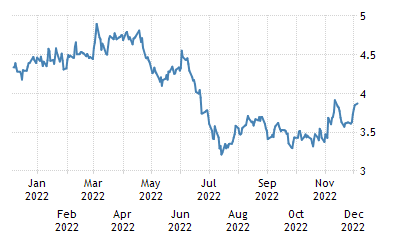
There are many excellent options available for tech dividend stocks. Below are the details on Texas Instruments. Seagate. Cisco. HP Inc.. and Cisco Systems. While these are great options, there are some things to keep in mind before you invest. These companies tend to have high valuations, so you'll want to make sure you research them thoroughly. Be open to growth opportunities and dividends.
Texas Instruments
Texas Instruments could be a good option if you're looking for tech dividend stocks. TI has a strong track record of returning cash shareholders. The recent announcement of TI highlights 18 consecutive years with dividend increases. In addition to its solid fundamentals, TI's business strategy and outlook is a compelling reason to invest in TI stock. However, investors should note that these statements are speculative and there are risks and uncertainties associated with these types of statements.

Seagate
If you are interested in buying cheap high-yield dividend stocks, you might want to check out Seagate and other tech stocks. These companies have increased their dividend payouts over time, with some paying them for as long as ten years. Western Digital doesn't pay dividends at all. Seagate and other tech dividend stocks are worth your consideration despite the risks.
HP Inc.
HP Inc. is an American multinational information technology company headquartered in Palo Alto, California. The company develops personal computers, printers, and related supplies. The company offers a wide range of products, including 3D printing options. HP Inc.'s FAQ provides more information. This article provides an overview about the company's services and products. Before we begin, let's take a look at what sets HP Inc. apart from its competitors.
Cisco
Although the market overall has avoided a bearish market, there are still a few companies who have shown that high-yield dividend stocks can make them a profit. Cisco is one such company. Cisco is a tech dividend stock that has a track record of paying a decent dividend and its future growth prospects are strong. Even if the stock's dividend hasn't been as good as investors had hoped, it's still a good option for conservative income investors.

SAP SE
SAP SE (NYSE-SAP) is one the most prominent companies in the software sector. The company has been on the rise over the past few years, and its dividend payments have reflected this growth. The company has a remarkable track record in increasing shareholder value and is one of the highest dividend payers. What makes SAP such attractive dividend stock? Let's take an overview of its history. The company was founded in 1972. There are over 140,000 shareholders. Its current market capitalization stands at $7.3B and has experienced a steady growth rate of over 6 percent for the last four years.
FAQ
How are share prices established?
The share price is set by investors who are looking for a return on investment. They want to make profits from the company. They purchase shares at a specific price. If the share price goes up, then the investor makes more profit. If the share value falls, the investor loses his money.
An investor's main objective is to make as many dollars as possible. This is why investors invest in businesses. They can make lots of money.
What is the difference in marketable and non-marketable securities
The differences between non-marketable and marketable securities include lower liquidity, trading volumes, higher transaction costs, and lower trading volume. Marketable securities, however, can be traded on an exchange and offer greater liquidity and trading volume. You also get better price discovery since they trade all the time. This rule is not perfect. There are however many exceptions. There are exceptions to this rule, such as mutual funds that are only available for institutional investors and do not trade on public exchanges.
Marketable securities are less risky than those that are not marketable. They generally have lower yields, and require greater initial capital deposits. Marketable securities are usually safer and more manageable than non-marketable securities.
A bond issued by large corporations has a higher likelihood of being repaid than one issued by small businesses. The reason is that the former is likely to have a strong balance sheet while the latter may not.
Because they can make higher portfolio returns, investment companies prefer to hold marketable securities.
What are the benefits of stock ownership?
Stocks are more volatile than bonds. Stocks will lose a lot of value if a company goes bankrupt.
However, if a company grows, then the share price will rise.
For capital raising, companies will often issue new shares. This allows investors the opportunity to purchase more shares.
Companies can borrow money through debt finance. This allows them to borrow money cheaply, which allows them more growth.
People will purchase a product that is good if it's a quality product. Stock prices rise with increased demand.
Stock prices should rise as long as the company produces products people want.
Statistics
- "If all of your money's in one stock, you could potentially lose 50% of it overnight," Moore says. (nerdwallet.com)
- US resident who opens a new IBKR Pro individual or joint account receives a 0.25% rate reduction on margin loans. (nerdwallet.com)
- Individuals with very limited financial experience are either terrified by horror stories of average investors losing 50% of their portfolio value or are beguiled by "hot tips" that bear the promise of huge rewards but seldom pay off. (investopedia.com)
- For instance, an individual or entity that owns 100,000 shares of a company with one million outstanding shares would have a 10% ownership stake. (investopedia.com)
External Links
How To
How to open and manage a trading account
Opening a brokerage account is the first step. There are many brokers out there, and they all offer different services. Some brokers charge fees while some do not. Etrade, TD Ameritrade and Schwab are the most popular brokerages. Scottrade, Interactive Brokers, and Fidelity are also very popular.
Once you've opened your account, you need to decide which type of account you want to open. You can choose from these options:
-
Individual Retirement Accounts (IRAs).
-
Roth Individual Retirement Accounts (RIRAs)
-
401(k)s
-
403(b)s
-
SIMPLE IRAs
-
SEP IRAs
-
SIMPLE 401 (k)s
Each option offers different benefits. IRA accounts provide tax advantages, however they are more complex than other options. Roth IRAs permit investors to deduct contributions out of their taxable income. However these funds cannot be used for withdrawals. SIMPLE IRAs and SEP IRAs can both be funded using employer matching money. SIMPLE IRAs are very simple and easy to set up. These IRAs allow employees to make pre-tax contributions and employers can match them.
Finally, determine how much capital you would like to invest. This is known as your initial deposit. Many brokers will offer a variety of deposits depending on what you want to return. Depending on the rate of return you desire, you might be offered $5,000 to $10,000. The conservative end of the range is more risky, while the riskier end is more prudent.
Once you have decided on the type account you want, it is time to decide how much you want to invest. Each broker sets minimum amounts you can invest. These minimums vary between brokers, so check with each one to determine their minimums.
After deciding the type of account and the amount of money you want to invest, you must select a broker. You should look at the following factors before selecting a broker:
-
Fees - Make sure that the fee structure is transparent and reasonable. Many brokers will offer trades for free or rebates in order to hide their fees. However, some brokers raise their fees after you place your first order. Do not fall for any broker who promises extra fees.
-
Customer service - Look for customer service representatives who are knowledgeable about their products and can quickly answer questions.
-
Security - Make sure you choose a broker that offers security features such multi-signature technology, two-factor authentication, and other.
-
Mobile apps - Find out if your broker offers mobile apps to allow you to view your portfolio anywhere, anytime from your smartphone.
-
Social media presence. Find out whether the broker has a strong social media presence. If they don't, then it might be time to move on.
-
Technology – Does the broker use cutting edge technology? Is the trading platform user-friendly? Are there any glitches when using the system?
Once you have selected a broker to work with, you need an account. Some brokers offer free trials. Other brokers charge a small fee for you to get started. You will need to confirm your phone number, email address and password after signing up. Then, you'll be asked to provide personal information such as your name, date of birth, and social security number. You'll need to provide proof of identity to verify your identity.
After you have been verified, you will start receiving emails from your brokerage firm. These emails contain important information about you account and it is important that you carefully read them. These emails will inform you about the assets that you can sell and which types of transactions you have available. You also learn the fees involved. You should also keep track of any special promotions sent out by your broker. These promotions could include contests, free trades, and referral bonuses.
Next, open an online account. An online account is typically opened via a third-party site like TradeStation and Interactive Brokers. These websites are excellent resources for beginners. You will need to enter your full name, address and phone number in order to open an account. Once you have submitted all the information, you will be issued an activation key. Use this code to log onto your account and complete the process.
You can now start investing once you have opened an account!